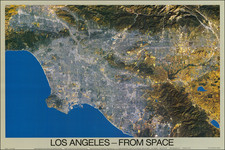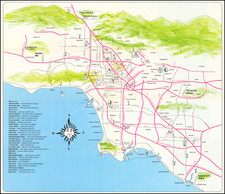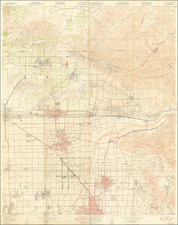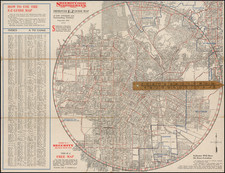Hollywood Park Place in the Heart of Hollywood, delineates a prime segment of early 20th-century Hollywood real estate, anchored by the residence of Paul de Longpré at its southern border. The subdivision map detail the area's burgeoning infrastructure, evolving commercial avenues, and the gravitational pull of Hollywood as a residential choice.
Situated strategically in the heart of Hollywood, the map showcases Hollywood Park Place's proximity to essential civic infrastructure. Notably, it's located a mere two blocks from both the Post Office and the city hall. Furthermore, the existence of three brick blocks under construction and the relocation of a new bank within this vicinity highlight the area's commercial evolution.
This map labels what is now Hollywood Boulevard as Prospect Boulevard. Prospect Avenue was renamed Hollywood Boulevard in 1910. The change reflected the community's growing prominence and the burgeoning film industry for which Hollywood would soon become world-renowned.
Construction of the Hollywood Freeway section of the U.S. Route 101 began in the late 1940s and continued into the 1950s, bisecting this neighborhood. The freeway effectively transformed the urban landscape, with some neighborhoods and properties inevitably impacted or divided by its construction. Much of the neighborhood north of the 101 still maintains the layout seen on this map.
The Hollywood Walk of Fame proceeds east from the section of "Prospect Boulevard" shown here.
Paul de Longpré
Paul de Longpré (1855–1911), a French-born artist primarily known for his elaborate floral watercolors, made a significant mark on the burgeoning cultural scene of Los Angeles at the turn of the 20th century. Arriving in Los Angeles in 1899, de Longpré was attracted by the region's favorable climate and diverse flora. He rapidly established himself, building a Moorish-style home and expansive garden on Hollywood Boulevard, which not only served as a showcase for his art but also became one of the earliest tourist attractions in the city. As a self-taught artist, de Longpré's detailed and vibrant depictions of flowers, juxtaposed against the backdrop of the semi-arid Californian landscape, captured the imagination of the public and the admiration of fellow artists. His prominence in Los Angeles not only highlighted the city's potential as a cultural center but also underscored the intersections of art, nature, and urban development during this pivotal period in the city's history.












![[Southern California Views] Delightful Southern California, The Land of Sunshine and Bloom](https://storage.googleapis.com/raremaps/img/small/74862.jpg)
![(Los Angeles Architecture) [Photograph of a 1920s Spanish Colonial Revival home, likely in the Hollywood Hills area; with glass plate negative]](https://storage.googleapis.com/raremaps/img/small/96755.jpg)
